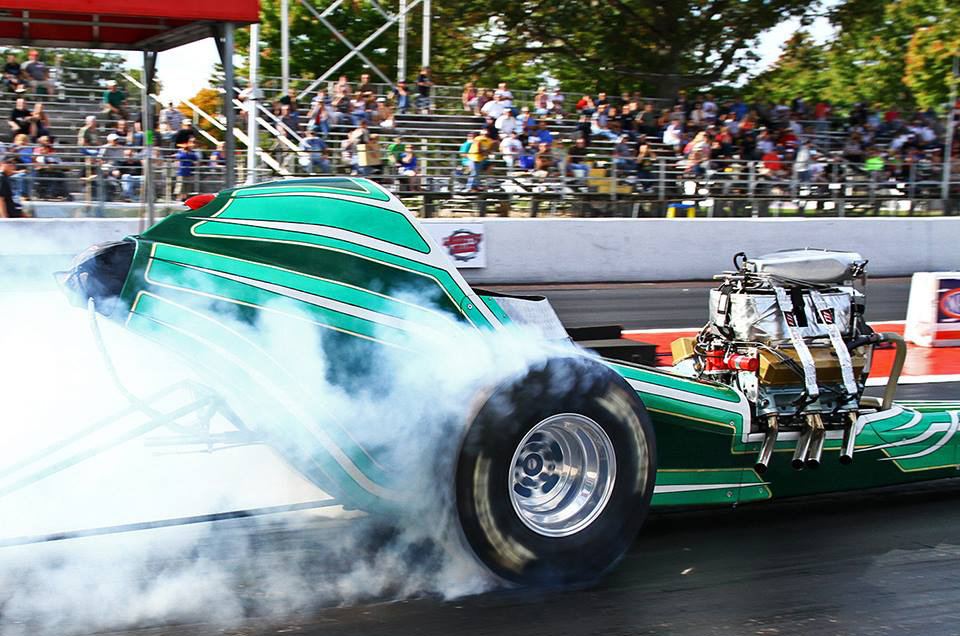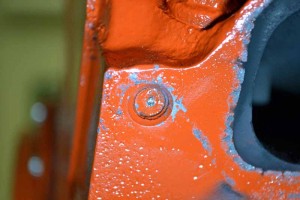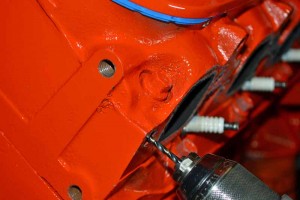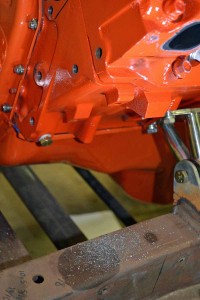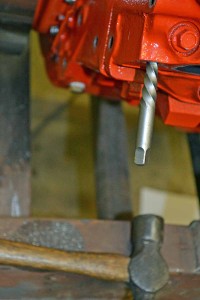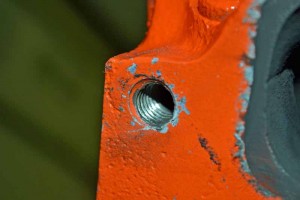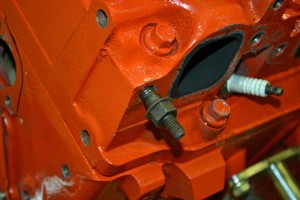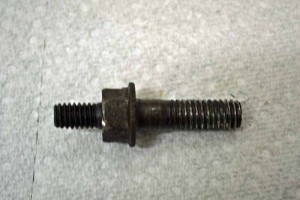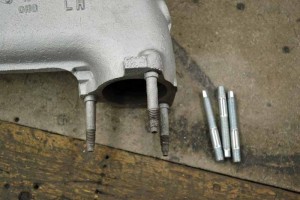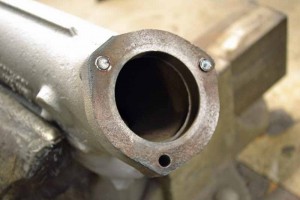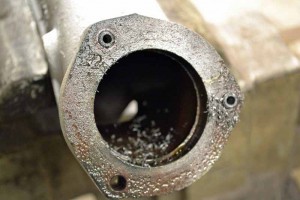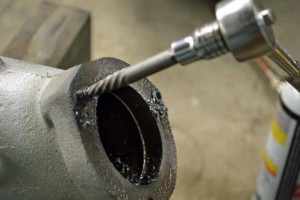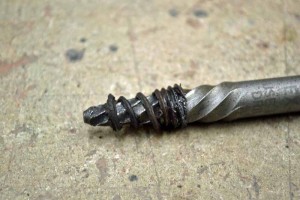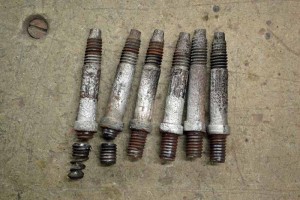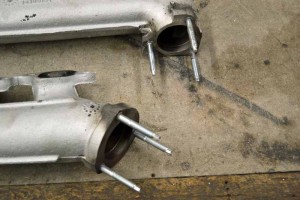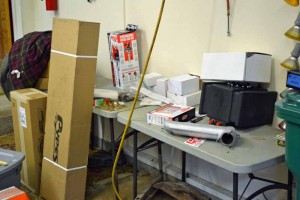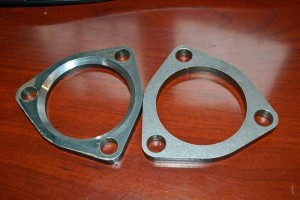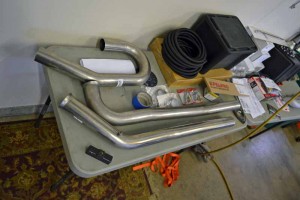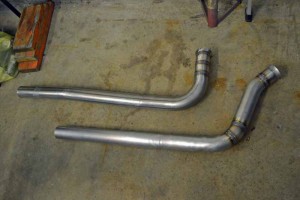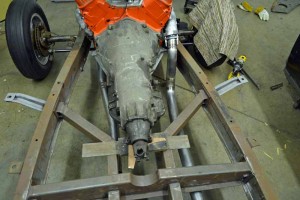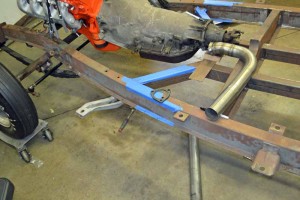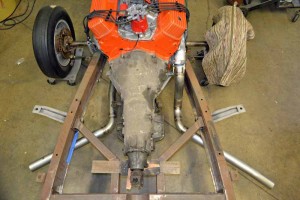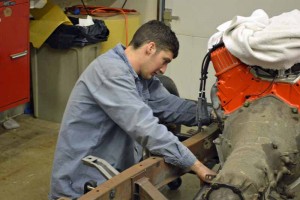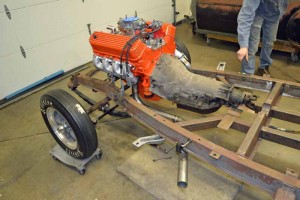1949 Chevrolet Gasser – Progress 2016 01 03
Click the picture to see a larger image
I have done what people recommend you do not do. Started a bunch of different projects and not finished any of them. The overall project becomes very overwhelming this way. I see no end in sight at this point.
The projects have gotten a little out of hand, but I can now report on a couple of them. The first one has taken some time to complete, but we are almost there now. It is the exhaust “system”.
The first thing that needed to be done is to remove an exhaust manifold bolt that broke off when we stripped the engine for cleaning and painting.
This produced a decent pile of metal shavings and the drilling actually went well. An easy out is tapped into the hole drilled in the bolt shaft and if all goes well the bolt shaft can then be removed. This seldom works for me; I either brake the easy out off (which is really bad as the easy out is made out of hardened metal) or the easy out just spins in the hole.
Below are two pictures, one with the stock stubs holding the exhaust manifold in place and another with 12 point stainless bolts holding the manifold in place. I really like the 12 point bolts as all you need to take most of the parts off the engine in the pits is a 3/8 inch 12 point socket. If you look though the pictures posted here you will notice that I have used these bolts to bolt just about everything back together.
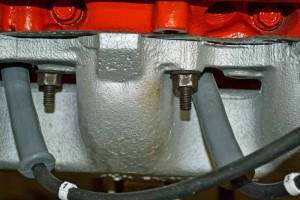 |
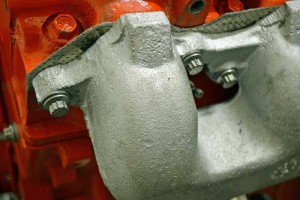 |
So now we have the block prepared to accept the exhaust manifolds. The manifolds have to be prepared for the down pipes. I will not show the painting of the manifolds, but I will share a trick to having the paint remain intact on the manifolds. I first sand blast them so that they are clean. I then apply up to five very thin coats of paint. Just enough to get coverage. I then go through the heat process on the side of the can (if you have never looked the VHT (Very High Temperature) paint cans have two different processes for heat treating the pain. I have had VERY good luck with curing the paint in the oven. Follow the heat and cooling cycles and temperatures specified on the can. It really works very well.
Now it is time to put the down pipes together. As no one makes down pipes for a 1949 Chevrolet with a Gen IV 454, we will have to make a small modification to a set of purchased pipes to make them fit.
We had to change the angles and lengths of the pipes right at the exhaust manifold to get the pipes to fit. If we had not they would have hit the frame, and as we have moved the engine both back and up, they also needed to be lengthened in order to get below the frame.
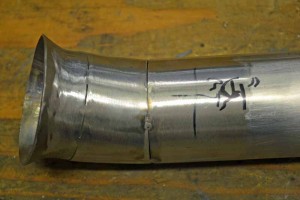 |
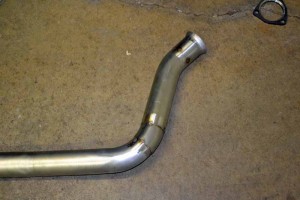 |
So this is what they looked like originally and what they ended up looking like after we pieced them together.
This is what they look like with the body on the chassis low at them from under the car.
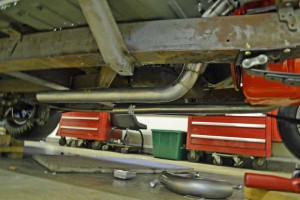 |
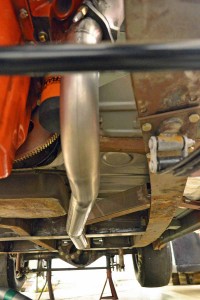 |
Now the exhaust is away from the engine, time to get it out from under the chassis. First step is to shorten the down pipes, and then weld turn outs and extensions onto the pipe
